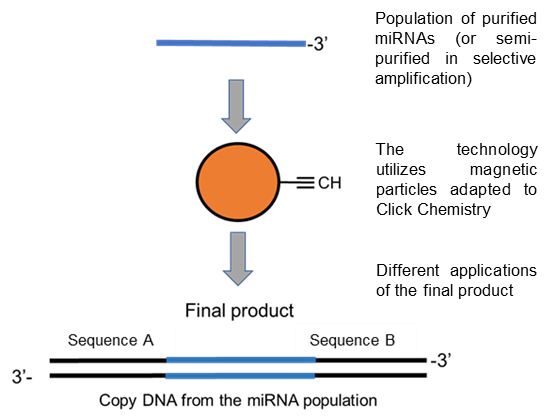Currently, the most common method for quantifying miRNA variants in biological samples is next-generation sequencing (NGS). However, this type of approach often produces errors when applied to the chemical characteristics of miRNAs, such as over- or underestimation of variants. This creates a challenge, as the results obtained through these sequencing methods can include significant deviations, including the failure to detect some variants present in the sample. Thus, there is a growing need for the development of miRNA quantification methods that bypass these limitations, improving efficiency and reducing associated biases. Several kits for generating miRNA libraries are already available in the market, but these generally come at a high cost per sample processed, excluding additional steps required in the process like miRNA extraction, quantification, and sequencing.
In this context, a group of researchers from ibs.Granada has developed a methodology for creating libraries of human circulating miRNAs, called Double Tailing Trap (DTT).
The methodology developed by the researchers allows for the capture of circulating miRNAs of interest using magnetic particles. These particles are linked covalently on their surface to oligonucleotides with known 5′ and 3′ end sequences. The miRNA is reverse transcribed on these oligonucleotides, and the adapters needed for sequencing are added by Taq-polymerase. This miRNA-seq method represents an innovative approach, as it eliminates the need for ligation reactions, therefore reducing the biases associated to the process.

The researchers have already validated the efficiency of this Double Tailing Trap methodology to create miRNA libraries at a lab scale and have protected it through a patent application (ES2909651A1). Currently, the researchers’ main goal is to scale the obtained results to develop a commercial kit for the quantification and sequencing of miRNAs in biological samples.
Additionally, the ibs.Granada team is exploring initial steps towards applying this innovation in clinical settings. They are currently carrying out a research project to develop their technology for early Alzheimer detection.
Benefits:
- Provides a new methodology to create miRNA libraries, improving aspects such as sensitivity and specificity.
- Allows for a significant reduction in the cost of sample processing and library obtention.
- Avoids the use of ligation reactions, thus eliminating the bias typically associated to this step.
- Presents an improved efficiency and reproducibility of the obtained results.
The represented institution is looking for a collaboration that leads to commercial exploitation of the presented invention.
Institution: Instituto de Investigación Biosanitaria de Granada (ibs.Granada)
TRL: 3-4
Protection status: Patent Application
Contacto: Carlos G. Gredilla / c.gredilla@viromii.com

